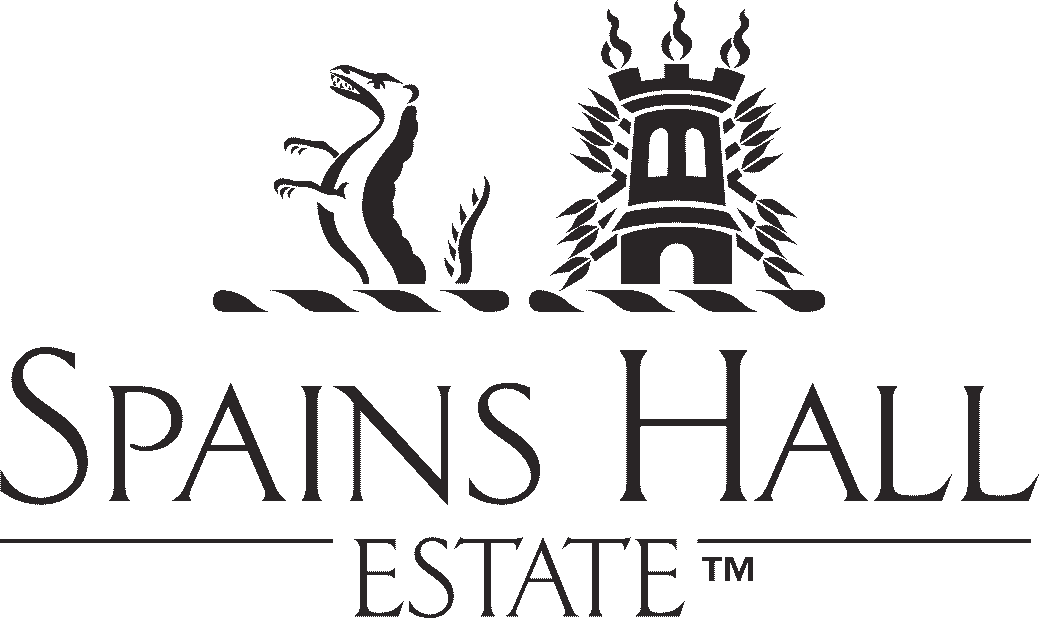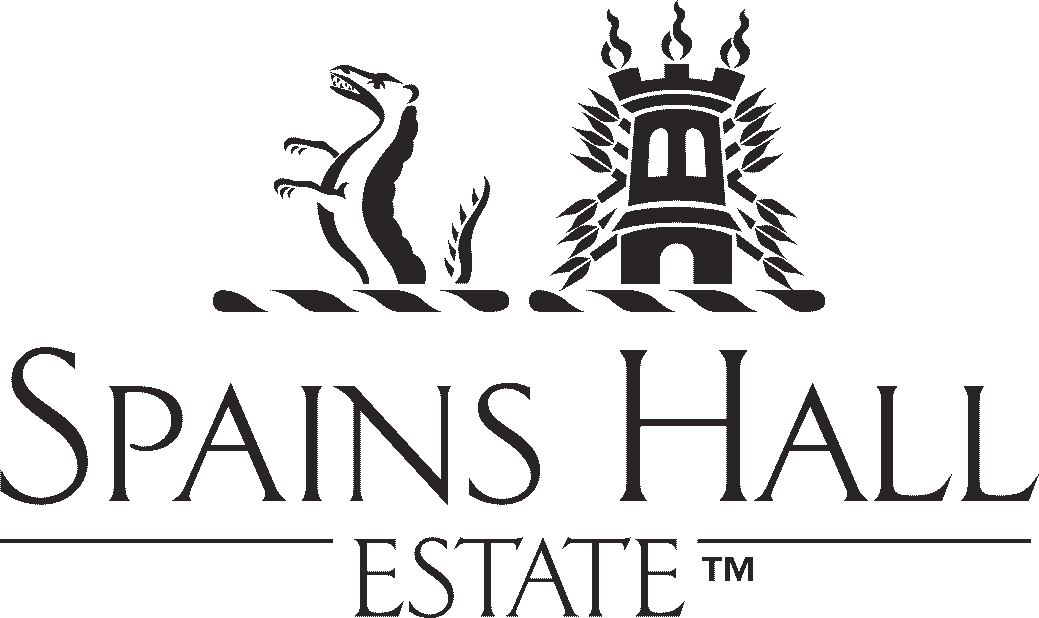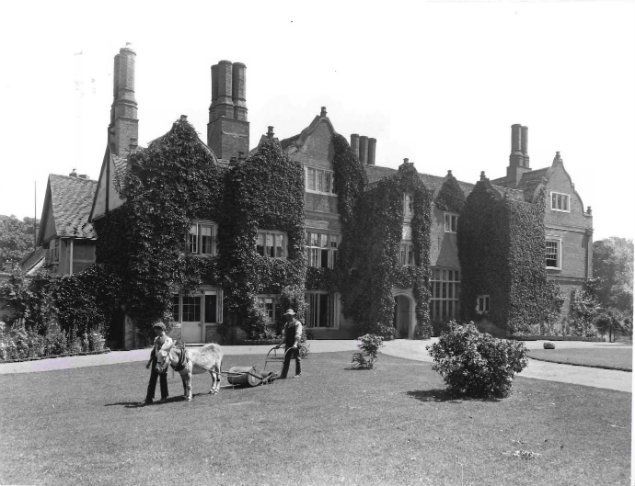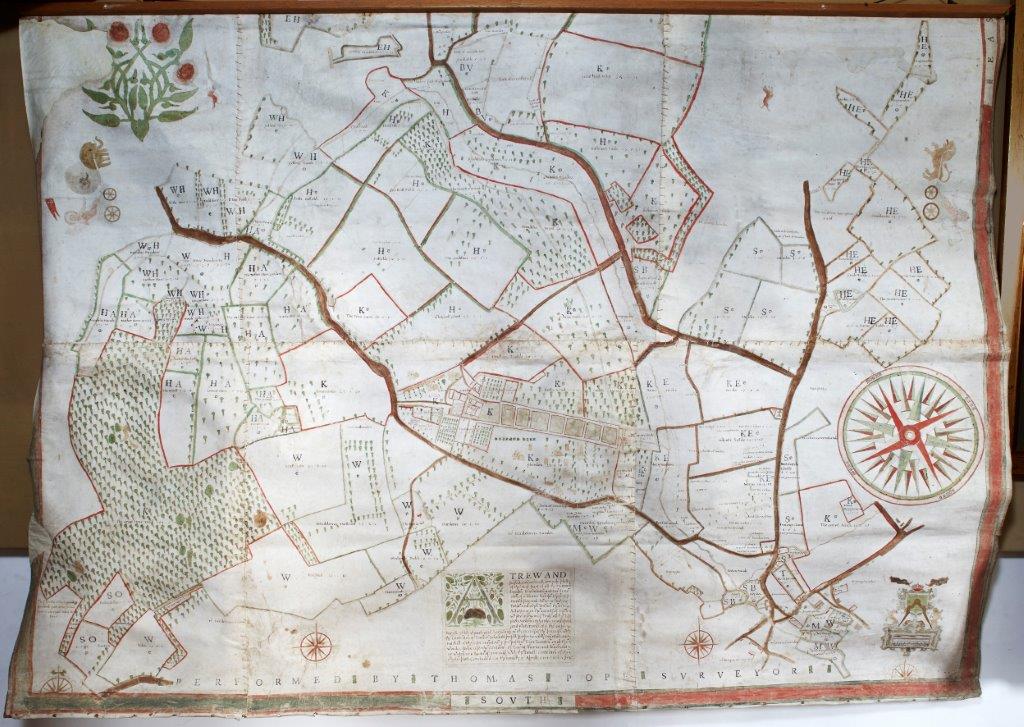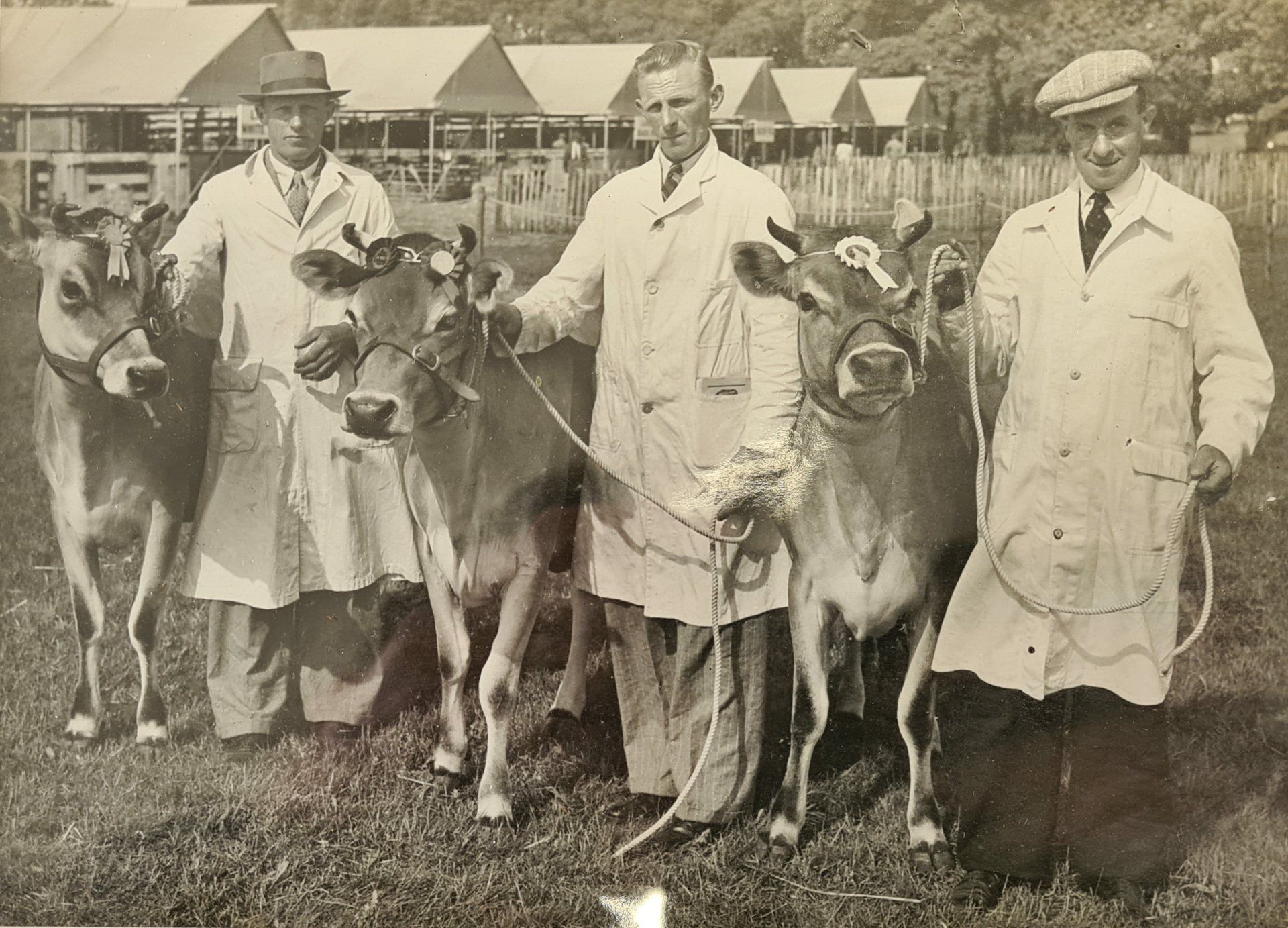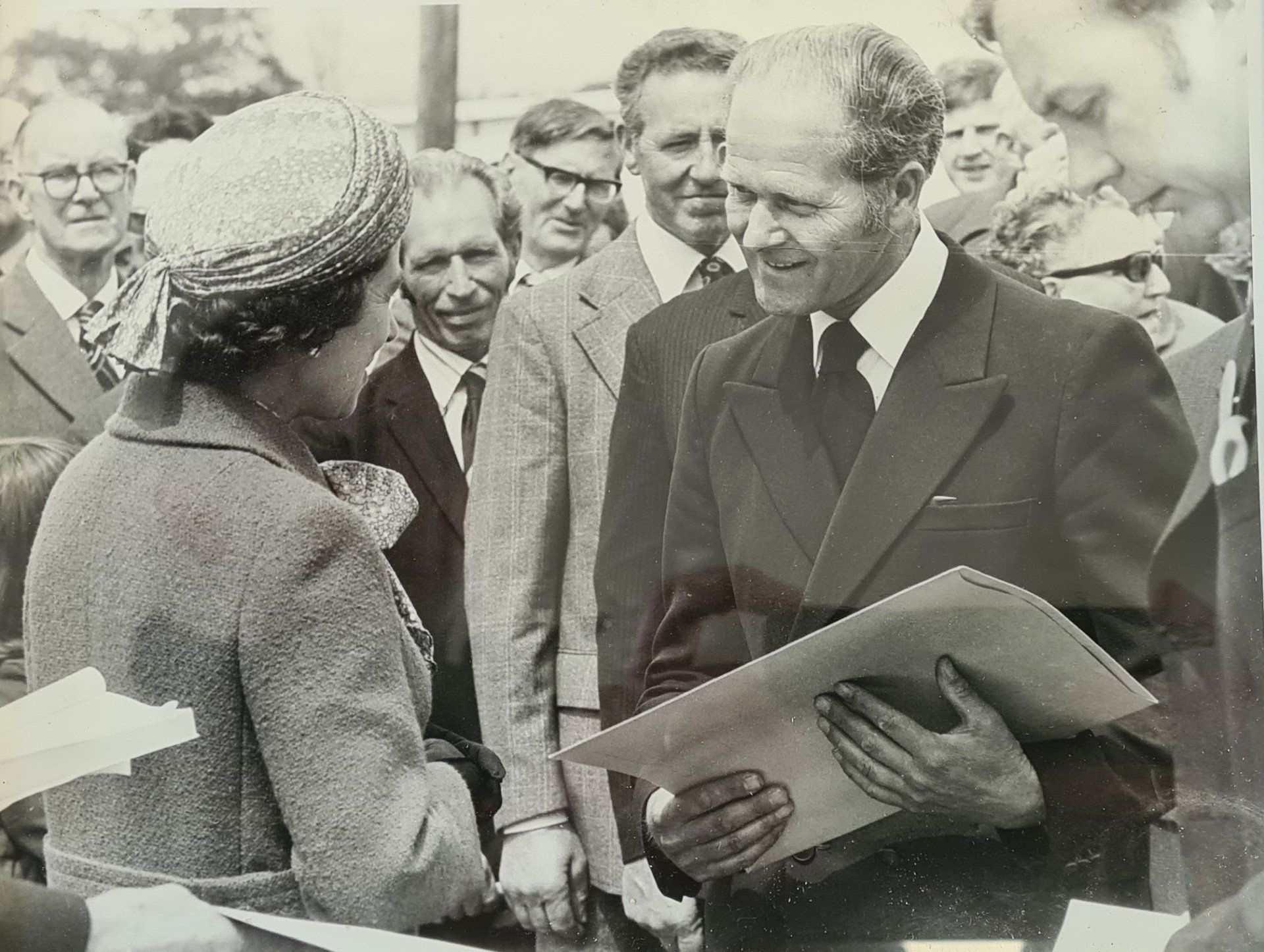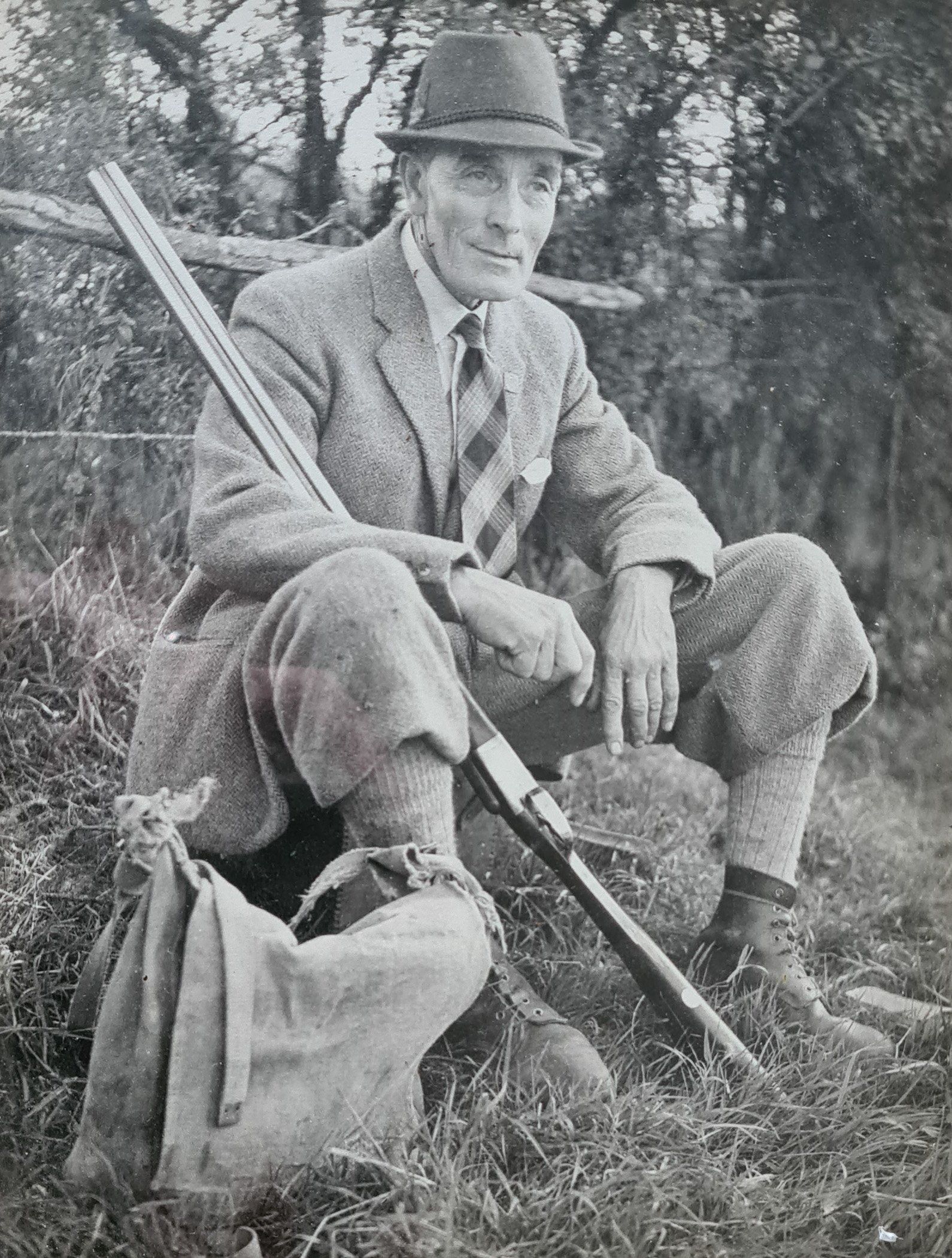History
Spains Hall Estate was bought by Samuel Ruggles on 5th December 1760 for £14,000. It comprised some 2000 acres, and an Elizabethan manor house, Spains Hall, a Grade 1 Listed building.
Over the years further land was bought and sold as opportunities arose or needs required. At least two outlying farms were purchased but were subsequently sold to meet death duties.
The estate today covers approximately the same acreage as it did in 1760 and remains in the Ruggles-Brise family ownership.
Estate Management over the years
Over the centuries it has been managed in a traditional way, dependent on agriculture as its main source of income to support the family, Spains Hall, and a significant number of farmhouses and cottages - including many in the village of Finchingfield. The 1618 map surveyed by Pope (above) shows the central areas of the Estate, including field names still in use today. Also shown are about 60 acres of ancient semi natural woodland. Further mixed broadleaf and coniferous woods were planted in the mid to late 19th century specifically for sporting purposes by Archibald Weyland R-B, great, great Grandfather of today’s Archie.
Shooting and fox hunting were the main country pursuits. In the early 20th century game birds were reared for sport, however during the Depression in the 1930’s this could no longer be afforded so the keeper was told he had to depend entirely on wild game. This policy has continued ever since and in its heyday in the 1950/1960s it was considered one of the best known wild bird shoots in the country. A small amount of wild bird shooting continues today.
This policy could only be sustainable if the woodland and hedgerows were managed sympathetically to ensure that habitat was maintained. In 1970s however, many farmers and Estate owners were encouraged (and indeed paid grant) to rip out hedgerows. At Spains, whilst some field amalgamation was undertaken nevertheless a substantial network of hedges was retained in order to preserve the habitat for wild game. The average field size was and remains far smaller than on neighbouring estates.
In the 1980s the woodlands crops of mature quality oak were taken, the most recent being in 1987 just before the hurricane of the same year. Other areas were partially felled then restocked with native broadleaves or allowed to regrow as coppice with standards. Some of the old hedges and some new were planted under the Countryside Stewardship Scheme available at the time. Small areas of new woodland were planted under the Woodland Grant and Farm Woodland Premium Schemes around 1988. You can find out more about our current woodland management regime here.
Farming
The farming of the land has changed as circumstances have dictated. In the 1930s Edward, “old” Archie’s son and MP for the area fought long and hard in Parliament for assistance to be given to the arable farmers in East Anglia. He was largely responsible for the introduction of the Wheat Act in 1932 which underpinned the viability of arable farming and saved the livelihoods of many families and rural communities. He was known as the “Farmers’ Friend” and was duly honoured for this work.
The Estate remains predominately arable with some grassland, though this is now starting to change.
The family owned a pedigree herd of Jersey cows before WW2, but the herd had to be sold. It was recreated in the 1950s before being sold once more as it was not longer profitable. Some pigs were kept but it is only in recent times that one of the farm tenants has been raising autumn born Pole Dorset sheep on cover crops in between arable ones.
The occupancy of the farmland has included “in hand”; tenanted under the Agricultural Holdings Act and Farm Business tenancies; farming partnerships and contract farming arrangements depending which were the most appropriate and possible at the time.
